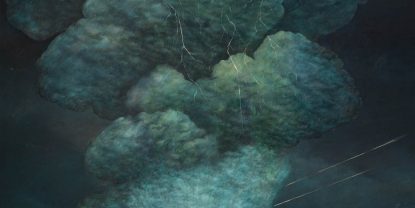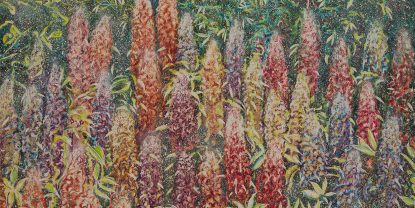A Duo Exhibition by Iman Ebrahimpour & Milad Jahangiri
Group Exhibition
August 14 — September 02, 2020
Iman Ebrahimpour and Milad Jahangiri’s duo exhibition is a good example of the coincidence of the ideas of two artists from a young generation.
In Ebrahimpour’s paintings, time moves slow: it is different from its conventional perception. The continuity of time is sterilized; instead, the collective aspect of memory is impregnated with meaning. In his visual world, which is full of details, colors and forms freely bleed into each other and plants can take root anywhere. Time is holding back while nature is ceaselessly destroying and reproducing itself. Observing nature and drawing inspiration from her ever-moving character, Iman Ebrahimpour creates an image by coloring and then defaces it by scraping the colors. With this painterly approach, each layer comes alive by burying the main layer, and what finally survives is the final dominant layer. Swamps, pristine forests, wide plains, and virtually any form of invasive nature are Ebrahimpour’s favorite scenes for depicting the circle of life. One of the shared features of these paintings is the presence of primitive figures and half-bodies amongst the details of the images, alluding to mythical or art-historical characters.
Milad Jahangiri is the painter of human’s awe and desperation. He depicts wondering figures in an illusory nature to construct a mysterious perspective of the post-crisis conditions. The pale, subdued colors in some of the works and the high contrast of colors in others are the two sides of the same coin in Jahangiri’s visual world. Situating human figures in formidable, pristine spaces in nature, he emphasizes man’s despondence, creating scenes that mirror our contemporary foreboding situation. In his coloring and the representation of some of the scenes, Jahangiri has used a translucent or transparent technique, in a way that one can see the former stage as well as the ending of the narrative at the same time.

